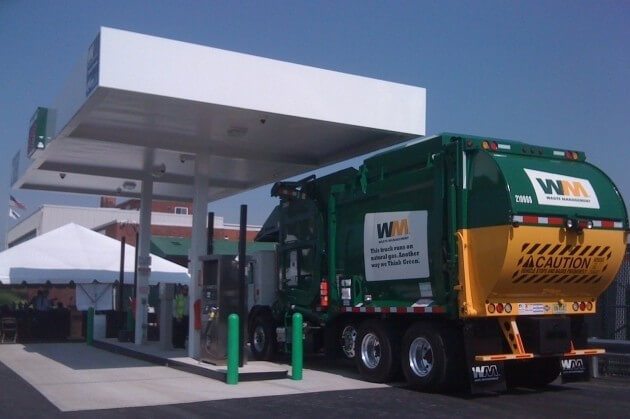CNG Fuel Station Sites Will Double Capacity in 2016


For many truck drivers, the idea of compressed natural gas vehicles is a sore subject. CNG trucks can’t pull as well as traditional diesel power plants, the fueling process takes much longer, and maintenance costs on the engines are at a premium. However, some sectors of the trucking and rail industries are taking a long hard look at the CNG fuel format because of the overall bottom line.
Regional trucking services such as Waste Management, Inc, UPS and Frito Lay have begun transferring a good percentage of their fleets to CNG and LNG fuel systems because they don’t have to rely on third party fuel providers to help keep their trucks on the road. The regional routes are well within the distance limit of a full tank of CNG. Owner/Operators and OTR truck drivers don’t have much of an option to convert yet. They need heavier loads to make more money, and CNG and LNG fueling stations are still hard to schedule for in certain areas of the country. As of now, there are still only about 800 stations in the continental US available to long haul truckers.
The price point attraction for O/Os and OTR truck drivers may change soon, however, in part due to the shale gas boom currently rippling through the trucking industry. Never before has the price gap between natural gas and diesel been so large, suddenly making natural-gas-powered trucks an alluring option for company fleets, rather than an impractical idea pushed mainly by natural-gas advocates like T. Boone Pickens.

And now it seems that private industry is ready to meet the trucking industry half way. The real estate development company DeBartolo Development and real estate consultancy Keystone Consulting Group announced a partnership and the creation of the CNG Infrastructure Expansion Project, with plans to develop 1,000 CNG fueling stations across the U.S. in the next four years. This essentially doubles the fueling capacity for commuters and trucking companies alike.
When asked whether these stations will be suitable for heavy-duty commercial tractor-trailers, Erik Hector, a DeBartolo spokesman, said the company “is interested in traditional build to suit opportunities involving full array of CNG fueling stations. Credit-worthy tenants and/or fueling contracts are required, and we have no bias toward public or private access or class of vehicle; only the precondition that minimum levels of yield are attainable for each investment.”
Many people are trying to figure out whether natural gas really has legs as a transportation fuel. Greg Burns, chairman and chief executive of PLS Logistics Services Inc. in Pittsburgh decided this year to ask 100 trucking company executives. The result: eight in 10 respondents said natural gas in its densest form, as LNG, has potential for highway use. Nearly a third said they were actively researching it for their own companies. But 54% said current infrastructure is inadequate and 23% worried about the higher cost of the trucks.
Although the U.S. has loads of natural gas, adoption of natural gas vehicles has been spotty. Less than 0.1% of vehicles on American roads burn the fuel today and the percentage sagged slightly from 2005 to 2010, when federal policies encouraging their use waned. The number began edging up last year, lifted by market forces.
Meanwhile, in the Asia-Pacific region, natural gas vehicle sales have grown at an average annual clip of 42% during the past decade, according to NGV Global, a trade group formed in 1986 to promote gas-friendly policies. Pakistan led the list in 2010 with 2.7 million natural gas vehicles, though many are tiny tuk-tuks, out of a total of 13 million natural gas vehicles worldwide. The U.S. came in 14th with 112,000 natural gas vehicles.